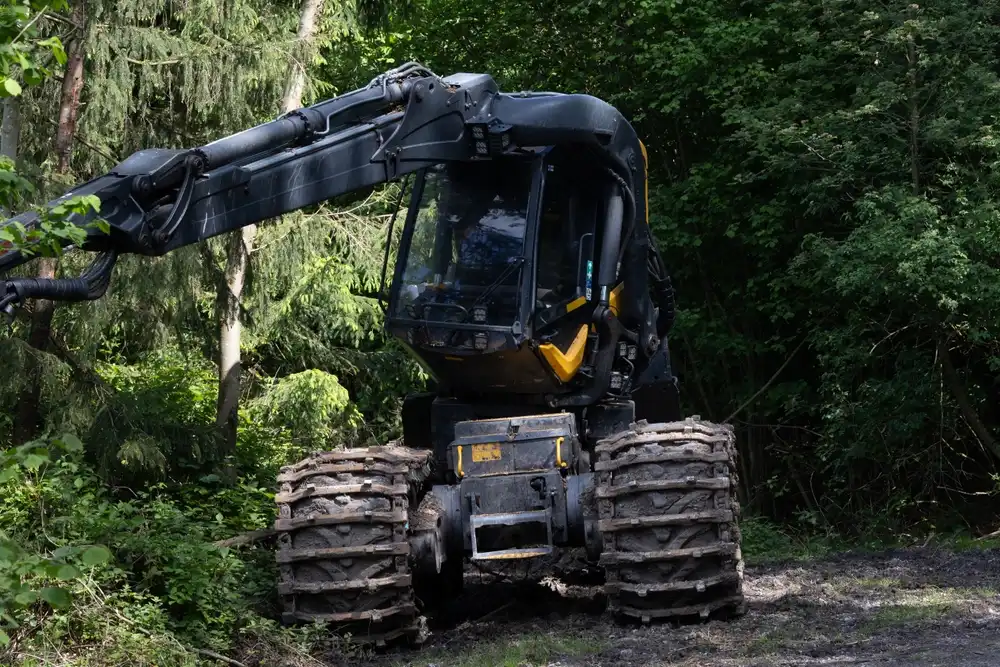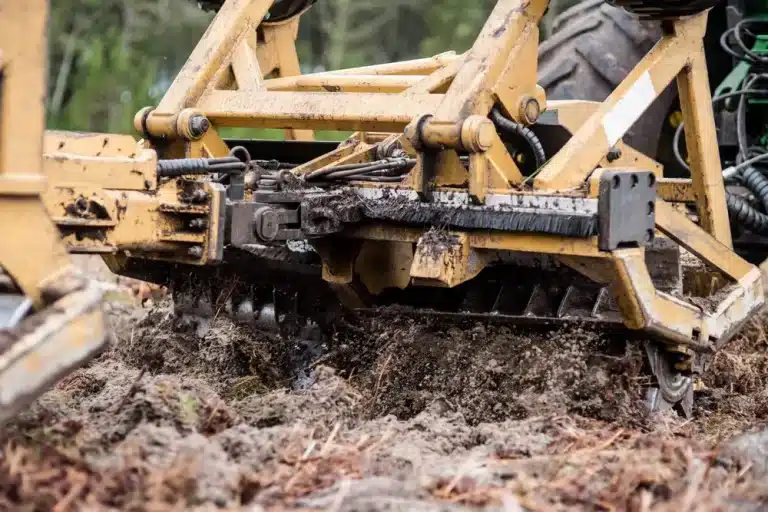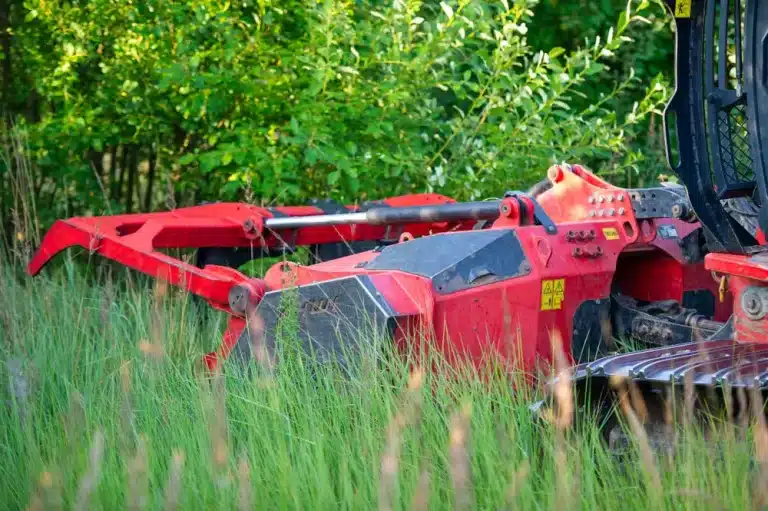Improper land clearing in Toulouse can result in soil erosion and loss of local biodiversity. With the city’s special mix of clay soils and lush vegetation, employing the proper tools isn’t just efficient — it’s eco-friendly. So, without further ado, let’s begin!
What are essential land clearing tools?
Land clearing requires the right tools for both fast and safe working. Selecting the right tool depends on the severity of the work, the kind of vegetation blocking the path, and the land that needs to be cleared. Small jobs, such as tight spots or work near fences, generally require basic hand tools. Big work, such as fields or heavy brush, requires hardened equipment.
Hand tools are best for small-scale or detail work. These include:
- Chainsaws for cutting trees or thick limbs.
- Brush cutters for weeds and grass in tight spots.
- Loppers to trim small branches and bushes.
- Axes for chopping roots or small trees.
Heavy machinery is the workhorse for large or tough tasks. Options include:
- Brush mowers to cut tall grass and brush fast.
- Backhoes to dig up roots or stumps.
- Bulldozers for pushing trees, rocks, or thick brush.
- Tractors with mowing, plowing, or debris-moving add-ons.
Depending on the kind of plants and terrain, one tool will work better than another. Dense forest with giant trees require powerful chainsaws or bulldozers. Rocky or hilly land is safer with tracked machines like backhoes. Flat fields with weeds or grass are simple to clear with tractors or brush mowers. For work near water or in wet patches, choose tools that can cope with mud or soft earth.
Ergonomic designs and built-in safety features make a huge difference. Padded handles, light frames and anti-vibration systems reduce fatigue. Safety guards, chain brakes and convenient stop switches provide an additional level of security, making the work flow easier with reduced danger.
Why invest in the right equipment?
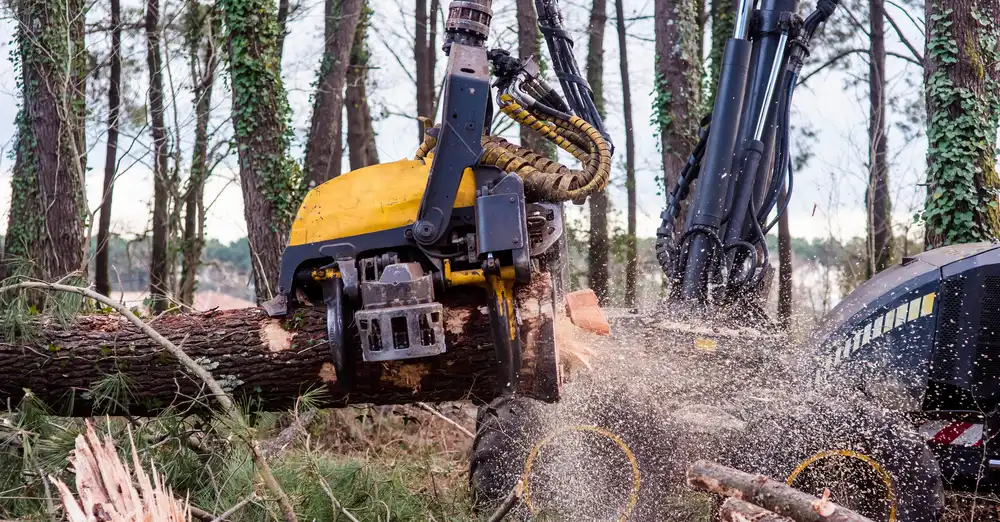
Land clearing is hard work, and the right equipment goes a long way. It’s not only about being fast. It impacts safety and work quality and even project costs. Every job site has its own needs, and to match the equipment to those needs is a really smart way to work.
- Reduce downtime and frustration with rugged, quality equipment.
- Don’t pay the repair or replacement costs that come with worn out gear.
- Keep workers safer with tools that fit the hand and body.
- Finish jobs faster and with less wasted effort.
- Invest right to save in the long run – equip yourself with the right tool for every job.
If you use tools that endure, you waste less time fixing things. To illustrate, a beefy solid steel brush cutter lasts longer than a bargain basement plastic one. That means you don’t have to interrupt the work to make repairs. Delays are expensive, particularly if you have to rent new gear or wait for parts. Top-notch equipment keeps the work location safer. Chainsaws with good grips and anti-vibration handles cut down on hand pain and reduce the risk for slips. For larger tasks, a cabbed tracked mulcher protects the operator from flying debris.
Ergonomic handles, padded straps, and balanced machines – make a big difference. Employees can power through longer with less damage to their backs, arms or shoulders. Which translates to less sick days and fewer bumps and bruises.
Choosing the appropriate equipment ultimately saves money. If you have a large field to clear, a skid steer with mulching head can takes down much more than a brush cutter. For small plots, hand tools or walk-behind mowers do the trick. The right match consumes less fuel, reduces labor expenses and eschews purchasing unused equipment.
Benefits of using proper tools
In my experience, proper tools for land clearing make all the difference in how work gets done. Good gear is a time-saver, a personal protective shield and machine insurance all in one. When it comes to land clearing work, having the latest, best-crafted tools isn’t just for efficiency—it’s for getting the job done properly and keeping projects on schedule.
- Lower costs and save time: Specialized tools like brush cutters, stump grinders, and mulchers can clear land much faster than hand tools. Proper-bladed chainsaws hack through dense brush and saplings in minutes, as opposed to hours with a machete or axe. Whether you opt for a skid steer with a brush attachment or a forestry mulcher, this means clearing a hectare requires less manpower and fewer working hours. That’s less labor, fuel, and overtime expenditures. For corporations, it helps keep projects on budget and complete on schedule.
- Better safety for workers: Many clearing tools now have built-in guards and shields to help stop flying debris and reduce the risk of injury. Excavators and bulldozers, for example, frequently have cab and rollover protection. Chainsaws now include chain brakes and antivibration systems. These options assist in keeping operators safe, particularly when operating in rugged or dense conditions. The right tool is less straining, which translates into fewer chronic injuries and less burnout in the profession.
- Longer life for equipment: Using the right tool for each job means less wear and tear on expensive machines. For instance, when you use a stump grinder for stumps instead of a backhoe, it puts less stress on the machine. Adhering to the appropriate attachments and maintenance plans, such as cleaning filters and checking blades, keeps equipment going for longer. That cuts down on repair costs and keeps tools good-to-go for the next gig.
Key types of machinery
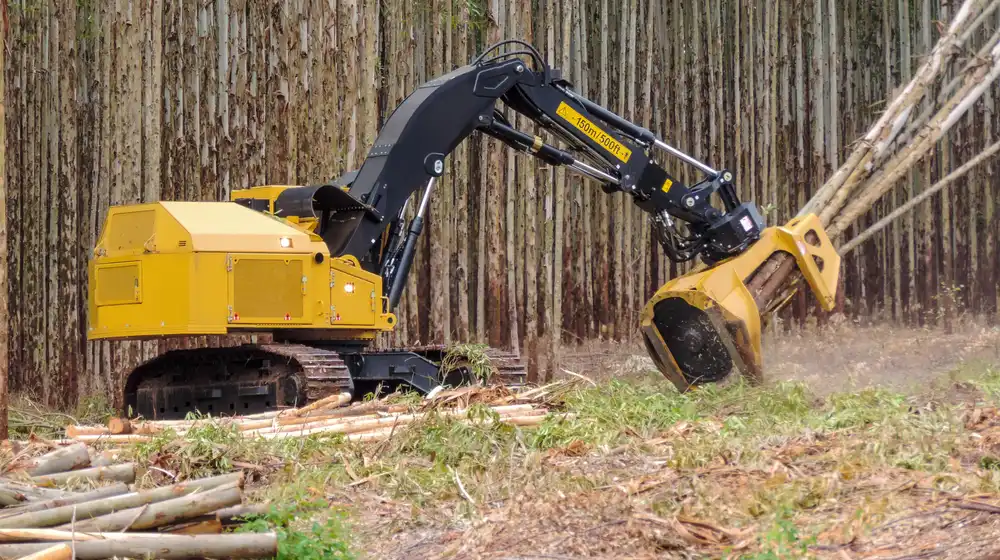
Land clearing requires powerful, dependable machines that can tackle hard work. Choosing the right equipment gets the job done quicker, with less risk, fewer accidents and less waste. The key types of machinery used globally are backhoes or excavators, bulldozers and tractors. Each serves a specific demand and has its own characteristics.
| Machinery | Main Features | Usual Uses | Examples |
| Backhoe/Excavator | Long arm with bucket, strong grip, rotates 360°, can switch tools | Digging up stumps, breaking ground, lifting big rocks, clearing roots and brush | Caterpillar 320, Komatsu PC200 |
| Bulldozer | Large flat blade, heavy tracks, strong push, easy to control | Pushing soil, leveling ground, moving logs or rubble, grading land | John Deere 850K, Liebherr PR 736 |
| Tractor | Compact frame, power take-off (PTO), can add many tools | Pulling rakes or plows, mowing, hauling, supporting chipper or mulcher | Massey Ferguson 4707, Kubota M7 |
Backhoes and excavators excel at digging, uprooting deep roots, and lifting heavy trunks or waste. These machines fit tasks where the dirt has to be broken or when accessing distant locations is required. They literally save you time when you’re pulling up trees or deep-rooted bushes. Swapping buckets for rippers or grapples adds even more utility.
Bulldozers excel at pushing dirt mounds, flattening plots, or scraping topsoil. The heavy blade tears through hard soil and shifts large piles in an instant. Locations with heavy brush, rough terrain or residual stumps require heavy duty dozers for refined ground preparation. Their broad tracks distribute weight, so they won’t sink in soft mud.
Tractors can handle a variety of tasks by towing or powering attachments like plows, mowers or mulchers. They pop into tight corners and twist with speed, so they’re great for heavy and light work alike. A robust tractor drags weights and drives other implements, making it a convenient option for all-in-one land clearing.
Renting vs buying equipment
Renting vs Buying Land Clearing Tools is about considering cost, your working frequency, and the ideal gear for the task. Certain projects require high-powered machinery such as excavators, mulchers, or stump grinders. Some require small equipment such as chainsaws or brush cutters. Price and convenience mean something to individuals and companies across the globe, so choosing the correct method can save time and money.
- Upfront Costs and Long-Term Expenses: Renting needs less cash at the start. You pay for just the days or weeks you need the tool. This is useful if you’re on a lean budget or only occasionally clear land. Purchasing is more expensive upfront. You pay outright, which can be pricey for large machinery. Over years, buying can be smart if you use the tool a lot, since you avoid paying rental fees. For instance, clearing land every month makes purchasing a brush cutter or skid-steer loader worthwhile. If you clear land once a year, renting a mulcher is less expensive.
- Access to New Gear and Fewer Worries: Renting means you get the newest tools with all the safety gear. You avoid repairing broken components, storing large equipment, or managing obsolete machinery. If a bulldozer or chipper breaks, the rental firm switches it out. This saves you time and prevents work stoppages. Renting plays out nicely if you need a specialty tool for a single job, such as a forestry mower or root rake.
- Control and Use: Buying gives you full control. Since the tool’s always at hand, you can work anytime. You select brands/models you trust, configure gear how you like, or add extras. So it’s ideal if you operate a land clearing company or have huge acreage to clear every season. You have to have somewhere to keep the gear and repair/maintain it, which is expensive and time consuming.
